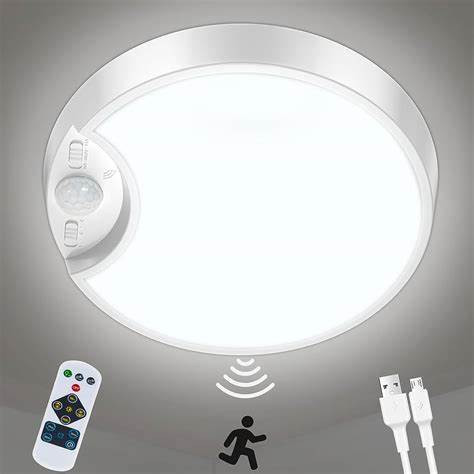views
🤖 What Are Sensor Lights?
Sensor lights are lighting systems that automatically turn on or off based on motion, occupancy, or ambient light levels. Instead of using a traditional switch, these lights respond to environmental changes — providing illumination only when needed.
The most common types of sensors used include:
-
Motion Sensors (PIR - Passive Infrared): Detect infrared radiation (body heat) movement.
-
Occupancy Sensors: Sense presence in a room and remain on until movement stops.
-
Daylight Sensors (Photocells): Adjust brightness based on natural light availability.
-
Microwave Sensors: Use high-frequency electromagnetic waves to detect motion, ideal through thin walls and glass.
⚙️ How Do Sensor Lights Work?
The underlying technology in sensor lights involves detecting changes in an environment and sending signals to a controller to activate or deactivate the lighting.
For example:
-
When someone enters a room, a motion or occupancy sensor detects movement and automatically turns on the light.
-
When the room becomes empty or still for a set period, the light turns off to conserve energy.
-
Daylight sensors monitor the ambient brightness and reduce or increase artificial lighting to maintain consistent illumination.
Modern sensor lights often integrate with home automation systems, enabling smart control via mobile apps, voice assistants (like Alexa or Google Assistant), and timers.
🌟 Key Benefits of Sensor Lighting
1. Energy Efficiency
Sensor lights reduce electricity consumption by ensuring lights are only on when necessary. This is especially beneficial in commercial buildings, parking lots, and public restrooms where lights are often left on unnecessarily.
2. Enhanced Security
Outdoor sensor lights act as a deterrent against intruders by instantly lighting up when motion is detected. They are ideal for driveways, gardens, entrances, and alleyways.
3. Hands-Free Convenience
No more fumbling for switches in the dark! Sensor lights are a boon in hallways, staircases, basements, and restrooms — especially for children, seniors, or people with disabilities.
4. Longer Lifespan of Bulbs
By minimizing the amount of time lights are left on, sensor systems help extend the lifespan of bulbs, particularly LED and CFL types.
5. Modern Aesthetics and Automation
Sensor lights align with the growing trend of smart living and green buildings. They add a sleek, tech-savvy touch to homes and commercial properties.
🏠 Applications in Different Environments
Residential Use:
-
Indoor: Bedrooms, kitchens, closets, stairways, bathrooms.
-
Outdoor: Garden paths, porch lights, garage lights, boundary walls.
Commercial Use:
-
Offices: Conference rooms, washrooms, corridors.
-
Retail & Hospitality: Display areas, hotel lobbies, storage zones.
-
Healthcare Facilities: Patient rooms, hallways, emergency exits.
Industrial Use:
-
Warehouses & Factories: Automating high-ceiling lights for energy savings.
-
Parking Areas: Ensuring safety and efficient lighting without manual intervention.
Public Infrastructure:
-
Streetlights: Smart city initiatives are increasingly replacing traditional streetlights with motion-activated or solar-powered sensor lights.
🔌 Easy Installation and Smart Integration
Most modern sensor lights are easy to install, compatible with existing wiring, and available in plug-and-play formats. They come in various designs — from wall-mounted fixtures to ceiling recessed lights and standalone outdoor floodlights.
For smart homes, many sensor lights offer Wi-Fi, Zigbee, or Bluetooth connectivity. Users can integrate them with automation platforms like Home Assistant, SmartThings, or Apple HomeKit, enabling customized lighting rules, remote control, and usage analytics.
⚠️ Considerations Before Installing
-
Choose the right sensor type for the application (e.g., PIR for indoor, microwave for outdoor).
-
Ensure the detection range and angle meet your space needs.
-
Look for adjustable timers and sensitivity settings.
-
Invest in quality IP-rated sensor lights for outdoor durability.
📈 The Future of Lighting is Sensor-Based
As we move towards more energy-conscious and automated environments, sensor lighting is becoming less of a luxury and more of a necessity. With rising electricity costs, increasing urbanization, and the push for sustainable development, sensor lights offer an ideal blend of technology and utility.
✅ Conclusion
Sensor lights are not just about turning lights on and off — they are about creating efficient, safe, and smart environments. Whether you're upgrading your home, optimizing your office, or designing a smart building, sensor lighting brings long-term benefits that go beyond illumination.
💡 Want to integrate sensor lighting into your smart home or business project?
Hexadecimal Software offers end-to-end IoT and automation solutions tailored for residential and commercial environments.
For smart property upgrades, home tech trends, and real estate innovation, check out the HexaHome Blog — your guide to the future of intelligent living.




Comments
0 comment